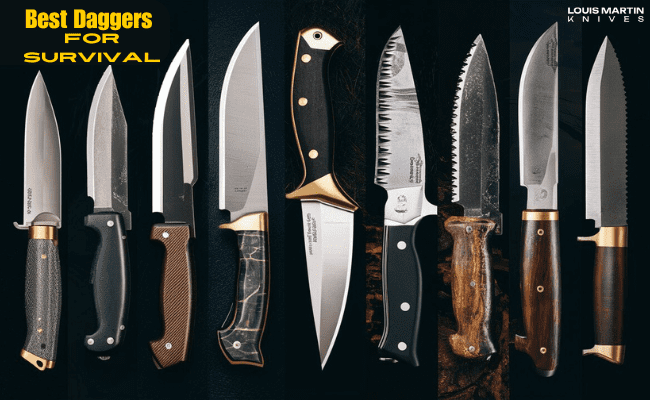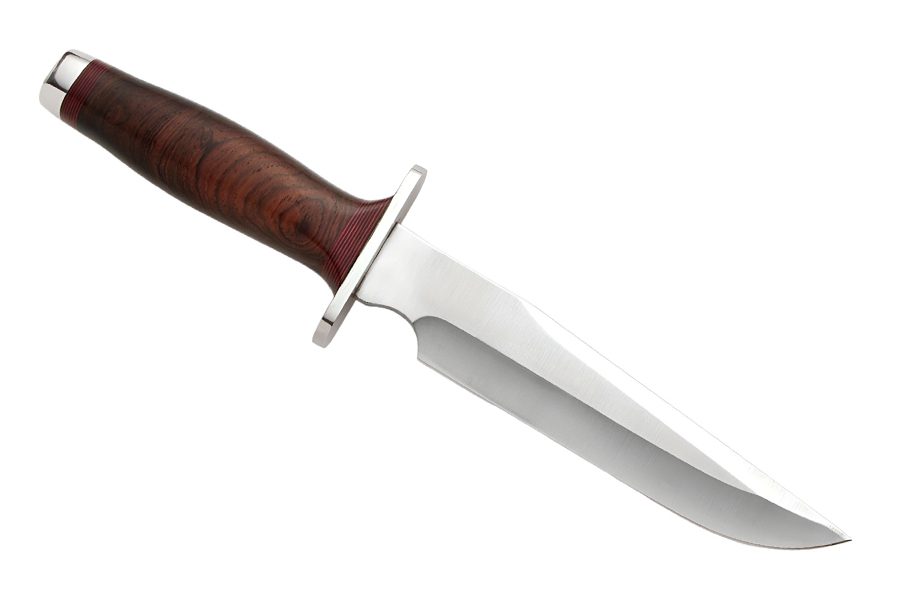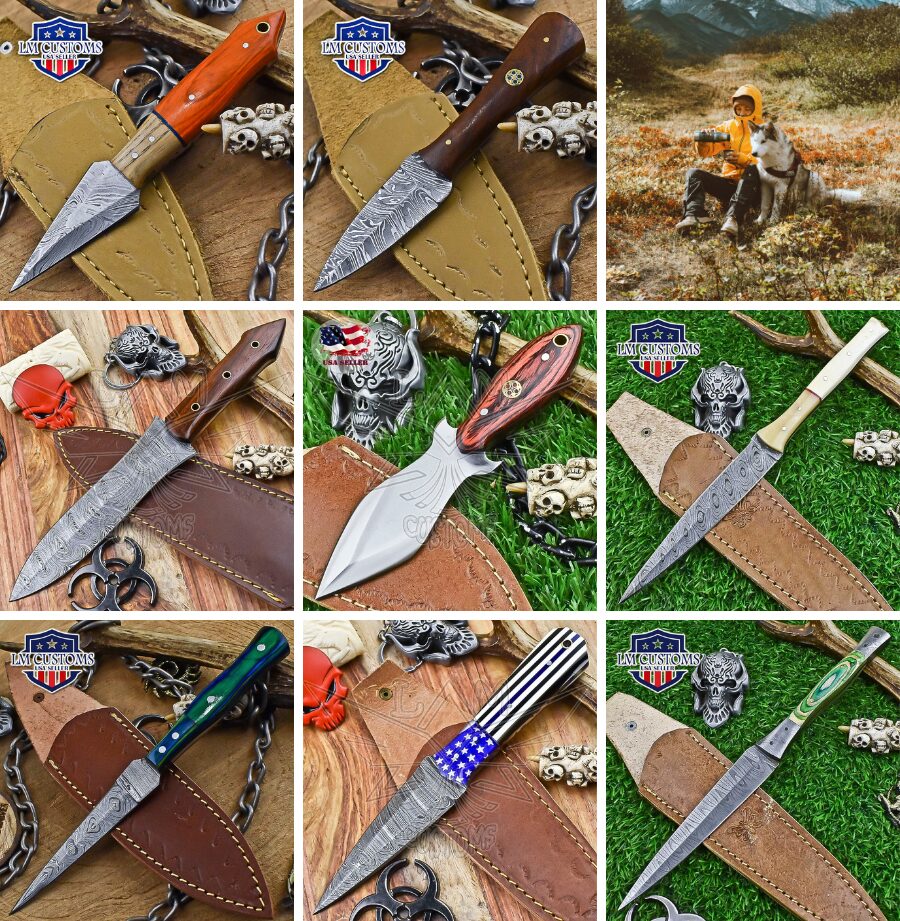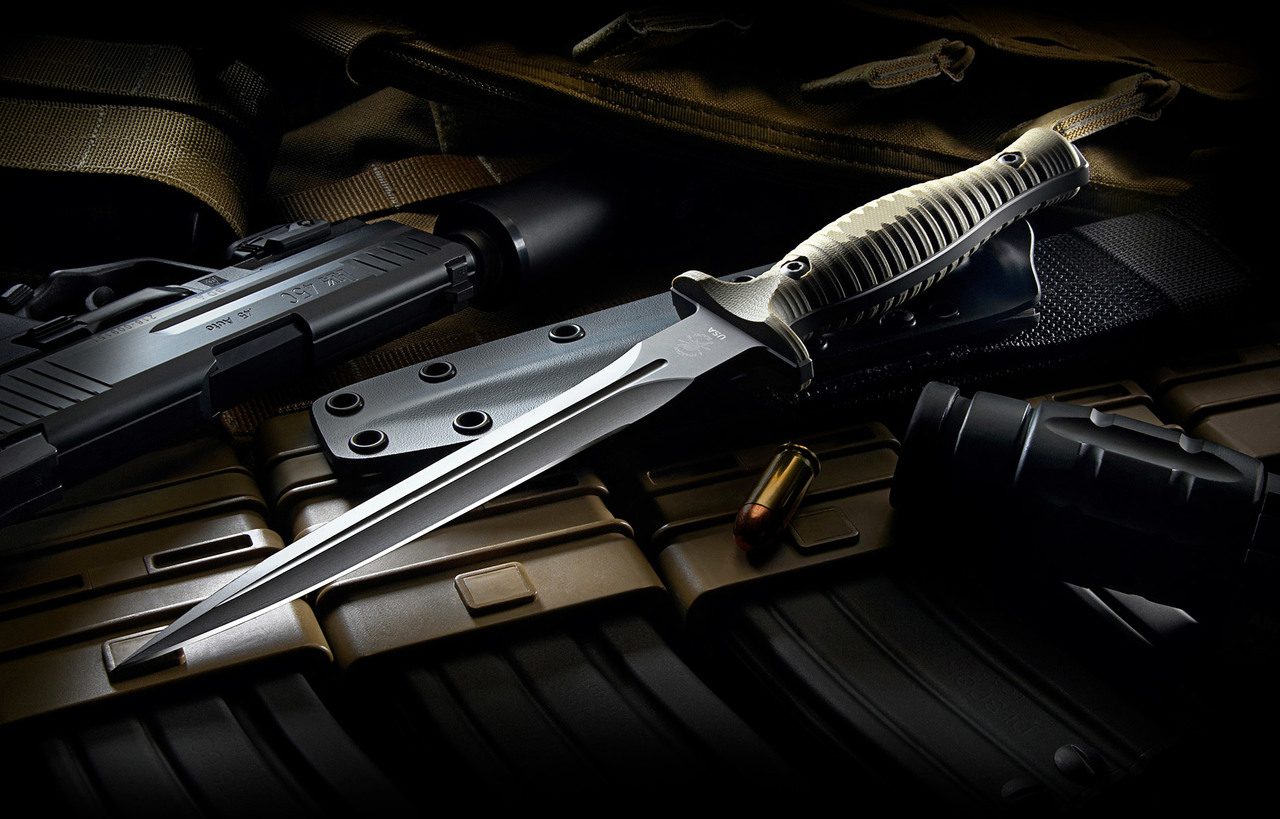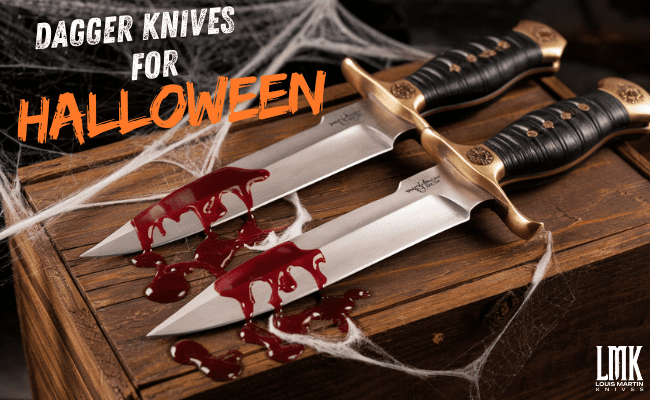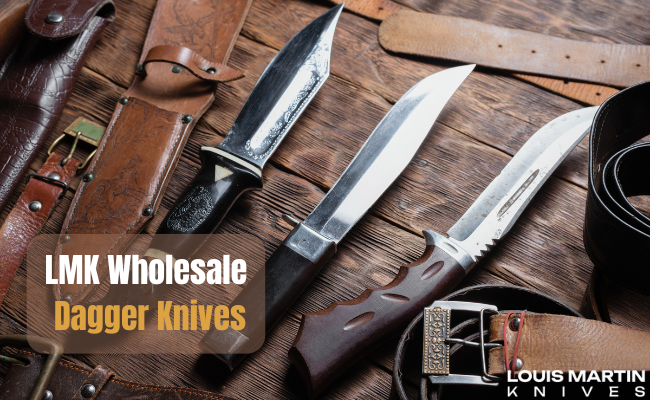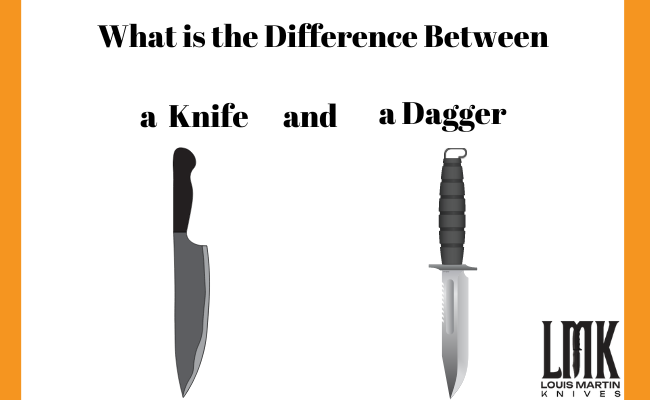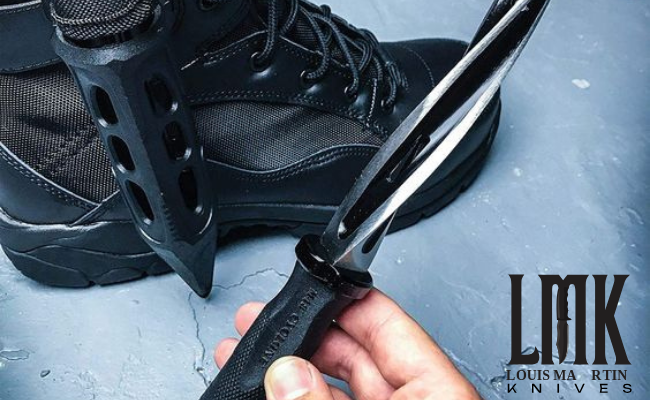Choosing the right good dagger knife for hunting and survival is crucial. These knives can be lifesavers in the wild, aiding in tasks from processing games to self-defense. A well-chosen best dagger knife can significantly enhance your outdoor experience, ensuring you are prepared for any situation.
Choosing the right dagger knife is crucial for outdoor enthusiasts. Bulk Knives offers a selection of high-quality custom knives, ensuring you’re prepared for hunting and survival tasks with durable, reliable tools.
Understanding Dagger Knives
Definition and Characteristics of Dagger Knives
A dagger knife is a double-edged blade designed for thrusting and stabbing. Unlike single-edged knives, the symmetrical blade of a dagger allows for effective piercing, making it a preferred choice for close combat and survival situations. The sharp point and dual edges make it a versatile tool for various cutting tasks.
History and Evolution of Dagger Knives
Best dagger knives have a long history, dating back to ancient civilizations where they were used as weapons and tools. Over the centuries, they have evolved in design and materials. Initially made from stone, bone, and bronze, modern daggers are now crafted from high-quality steel, offering improved durability and performance.
Comparison with Other Types of Knives
Compared to other knives like Bowie or tactical knives, daggers are specialized for stabbing rather than slashing. With their single-edged and clip-point design, Bowie knives are better suited for chopping and skinning. Tactical knives, often with serrated edges, are designed for versatility in combat and utility tasks. With their double-edged blades, daggers excel in thrusting and precise cutting tasks, making them ideal for hunting and survival scenarios.
Key Features to Look for in Dagger Knives
Blade Material and Durability
The blade material is a critical factor in a good dagger knife’s performance. High-carbon steel and stainless steel are popular choices. High-carbon steel blades are known for their sharpness and edge retention, while stainless steel blades offer superior corrosion resistance, essential for outdoor use.
Blade Length and Shape
Dagger knives typically have blades ranging from 3 to 8 inches. A blade length of 4 to 6 inches for hunting and survival provides a good balance between portability and functionality. The symmetrical, double-edged blade is essential for effective thrusting and piercing.
Handle Design and Grip Comfort
A secure and comfortable grip is vital for precise control and safety. Look for handles made from durable materials like G10, Micarta, or rubber. Ergonomic designs with finger grooves or textured surfaces enhance grip stability, even in wet conditions.
Weight and Balance
The knife’s weight and balance affect its handling and usability. A well-balanced top dagger knife should feel comfortable in hand, with the weight distributed evenly between the blade and handle. This balance allows for precise control during intricate tasks.
Sheath and Carrying Options
A reliable sheath is crucial for safe storage and easy access. Look for sheaths made from durable materials like Kydex or leather. They should offer secure retention and multiple carrying options, such as belt loops or MOLLE compatibility for versatile attachment.
Top Dagger Knives for Hunting
Knife 1: Buck Knives 119 Special
Key Features and Specifications: High-carbon steel blade, 6-inch length, classic phenolic handle.
Pros: Excellent edge retention, durable construction, comfortable grip.
Cons: Slightly heavier than other options.
Ideal Use Cases: Ideal for processing games and general outdoor tasks.
Knife 2: SOG Pentagon
Key Features and Specifications: AUS-8 stainless steel blade, 5-inch length, Kraton handle.
Pros: Corrosion-resistant, lightweight, excellent grip.
Cons: Kraton handle may wear over time.
Ideal Use Cases: Suitable for precise cutting and skinning tasks.
Knife 3: Gerber Mark II
Key Features and Specifications: High-carbon stainless steel blade, 6.5-inch length, aluminum handle.
Pros: Robust build, excellent piercing capability, ergonomic handle.
Cons: Aluminum handles can be cold in extreme temperatures.
Ideal Use Cases: Ideal for heavy-duty hunting and survival tasks.
Bulk Dagger Knife
Top Dagger Knives for Survival
Knife 1: Louis Martin Dagger
Key Features and Specifications: Damascus steel blade, 5-inch length, stag horn handle.
Pros: Unique design, superior sharpness, excellent grip.
Cons: Higher maintenance is required for Damascus steel.
Ideal Use Cases: Suitable for bushcraft and survival tasks requiring precision.
Knife 2: Survivor’s Edge Dagger
Key Features and Specifications: 440C stainless steel blade, 4.5-inch length, G10 handle.
Pros: Corrosion-resistant, durable, excellent grip in wet conditions.
Cons: Slightly shorter blade.
Ideal Use Cases: Perfect for emergencies and close-quarters self-defense.
Knife 3: RescueBlade Dagger
Key Features and Specifications: High-carbon stainless steel blade, 5.5-inch length, rubber handle.
Pros: Durable, excellent edge retention, non-slip grip.
Cons: Heavier handle.
Ideal Use Cases: Ideal for rescue operations and survival scenarios.
Multi-Purpose Dagger Knives
Knife 1: VersaBlade Dagger
Key Features and Specifications: VG-10 stainless steel blade, 5-inch length, Micarta handle.
Pros: Versatile, durable, comfortable grip.
Cons: Higher price point.
Ideal Use Cases: Suitable for both hunting and survival tasks.
Knife 2: AdaptEdge Dagger
Key Features and Specifications: D2 tool steel blade, 4.5-inch length, G10 handle.
Pros: Excellent edge retention, durable, ergonomic design.
Cons: Requires regular maintenance to prevent rust.
Ideal Use Cases: Ideal for a variety of outdoor tasks and emergencies.
Tips for Maintaining Your Dagger Knife
Proper maintenance ensures your leading dagger knife remains reliable and efficient. Here are some tips.
Cleaning and Sharpening Techniques: Clean your knife after each use with mild soap and water. Dry it thoroughly to prevent rust. Use a sharpening stone or honing rod to maintain the edge.
Storage Recommendations: Store your knife in a dry place, preferably in its sheath. Consider using a blade protector or case for additional safety.
Safety Tips: Always handle your best knife with care. Keep it out of reach of children and never use it for tasks beyond its design, such as prying or chopping heavy objects.
Conclusion
Choosing the right dagger knife is crucial for both hunting and survival. A high-quality finest dagger knife can significantly enhance your outdoor experience, offering reliability and versatility in critical situations. Invest in a durable, well-designed dagger knife to ensure you are well-prepared for any adventure. Explore our recommended options and make an informed decision to find the perfect tool for your needs.
Frequently Asked Questions
1. What makes dagger knives suitable for hunting and survival?
Best dagger knives are ideal for hunting and survival because of their double-edged blade, which allows for effective thrusting and piercing. This design makes it versatile for tasks such as best skinning games or self-defense. Key factors include a strong, sharp blade made of durable materials, a comfortable and secure handle, and a well-balanced design for precise control.
2. How do I choose the right dagger knife for my needs?
When choosing the best dagger knives, consider blade material (high carbon steel or stainless steel), blade length (4 to 6 inches is best for most tasks), handle design (ergonomic and made from durable materials), and the weight and balance of the knife. Also, look for a reliable sheath for safe storage and easy access.
3. How should I maintain my dagger knife to ensure it lasts?
To maintain your top dagger knives, clean them with mild soap and water after each use, and dry them thoroughly to prevent rust. Sharpen the blade regularly using a whetstone or honing rod. Store the knife in a dry place, preferably in its sheath, and handle it with care to avoid unnecessary wear or damage.
